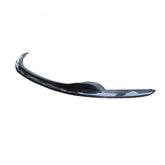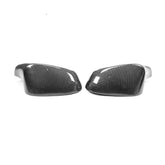While coilovers are known for their excellent performance and adjustability, like any automotive component, they may encounter issues over time. It’s essential to promptly address and troubleshoot any problems to maintain optimal suspension performance and ensure a smooth driving experience. In this guide, we’ll explore some common coilover issues, their potential causes, and the appropriate troubleshooting steps to resolve them.

1. Uneven Ride Height
Potential Causes:
- Unevenly adjusted coilovers on each corner of the vehicle
- Damaged or worn-out coil springs
- Loose or damaged mounting hardware
Troubleshooting:
- Carefully measure the ride height on all four corners of the vehicle and adjust the coilovers as needed to achieve a balanced ride height.
- Inspect the coil springs for signs of damage or sagging. If necessary, replace them with high-quality springs from the same manufacturer or reputable aftermarket options.
- Check all mounting hardware, including upper and lower mounts, for any signs of wear or damage. Tighten or replace any loose or damaged components.
2. Noisy Suspension
Potential Causes:
- Loose or worn-out components, such as mounting hardware or bushings
- Insufficient lubrication in adjustable components
- Damaged or faulty shock absorbers
Troubleshooting:
- Thoroughly inspect all suspension components for signs of wear or looseness. Tighten any loose bolts or replace worn-out components.
- Apply recommended lubrication to adjustable components, such as damping adjustment knobs or camber plates, following the manufacturer’s guidelines.
- Test the shock absorbers for smooth operation by compressing and extending them. If you notice any unusual resistance or noise, the shocks may be damaged and require replacement.
3. Harsh Ride or Bouncing
Potential Causes:
- Excessive damping or overly stiff spring rates
- Incorrect preload settings on the coilovers
- Damaged or worn-out shock absorbers
Troubleshooting:
- Adjust the damping settings to a softer setting if the ride feels excessively harsh or bouncy. Gradually make adjustments until you find the right balance between comfort and performance.
- Check and adjust the preload settings on the coilovers according to the manufacturer’s recommendations to ensure proper suspension travel.
- Test the shock absorbers for any signs of leakage, uneven damping, or lack of resistance. If issues are detected, consider replacing the shocks with high-quality replacements.
4. Leaking Shock Absorbers
Potential Causes:
- Damaged or worn-out seals in the shock absorbers
- Overheating of the shock absorbers due to aggressive driving or overloading
Troubleshooting:
- Inspect the shock absorbers for any signs of oil leakage or wetness around the seals. If leakage is evident, the shocks may need to be rebuilt or replaced.
- Avoid aggressive driving and heavy loads that can lead to overheating of the shock absorbers. Allow them to cool down after intensive use to prevent premature wear.
5. Premature Coilover Wear
Potential Causes:
- Lack of proper maintenance, such as cleaning and lubrication
- Aggressive driving or track use without adequate adjustments and precautions
- Low-quality or non-OEM replacement parts
Troubleshooting:
- Regularly clean and inspect your coilovers to ensure they are free from dirt, grime, and debris. Apply appropriate lubrication to adjustable components as recommended by the manufacturer.
- If you engage in spirited driving or track use, ensure that your coilovers are adjusted and set up correctly for these scenarios to avoid excessive wear.
- Always use high-quality, OEM, or reputable aftermarket replacement parts when servicing your coilovers.
Conclusion
By promptly identifying and troubleshooting common coilover issues, you can maintain the optimal performance and durability of your suspension system. Regular inspection, proper maintenance, and adherence to manufacturer guidelines for adjustments and settings will help you enjoy a smooth and controlled driving experience with your coilovers.










